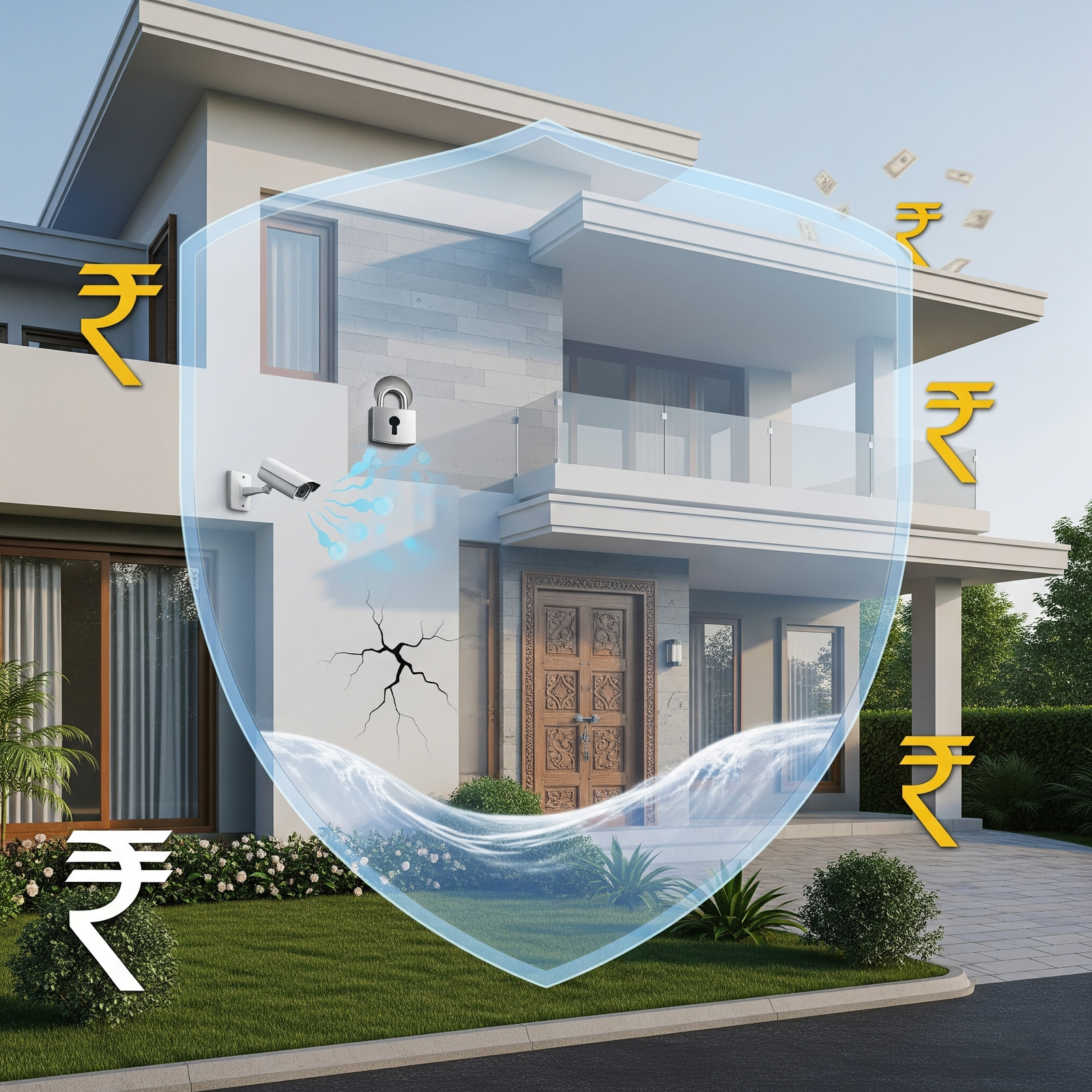For most Indians, a home isn’t just a structure; it’s a dream realized, a lifetime’s savings, and the sanctuary for their loved ones. Yet, this most valuable asset remains surprisingly vulnerable to unforeseen perils. While we diligently insure our cars and health, the very roof over our heads often goes unprotected. This is where Home Insurance steps in, acting as the ultimate financial safeguard, providing a much-needed layer of security in an increasingly unpredictable world.
In India, with its diverse geography prone to natural calamities and urban centers facing the risks of theft and accidental damages, home insurance is no longer a luxury but a fundamental necessity. It’s the assurance that, come what may, your most significant investment and cherished possessions are financially secure.
Beyond Walls: What Home Insurance Covers
Unlike popular perception, home insurance extends far beyond just covering the physical structure. A comprehensive policy in India typically offers protection for two main components:
- Building (Structure) Cover: This protects the actual physical structure of your house – its walls, roof, foundation, fixtures, and fittings. It also extends to permanent outbuildings like garages, sheds, and compound walls. The sum insured for the building is usually based on the reconstruction cost, not the market value of the property, as it excludes the cost of the land.
- Contents Cover: This safeguards your personal belongings inside the house, including furniture, appliances, electronics, clothing, and other valuables. It’s crucial to estimate the replacement cost of your contents accurately to ensure adequate coverage.
Common Perils Covered:
Indian home insurance policies, particularly the standardized Bharat Griha Raksha policy introduced by IRDAI, typically cover a wide array of perils, including:
- Fire and Allied Perils: Fire, lightning, explosions, implosions.
- Natural Disasters: Storm, cyclone, typhoon, tempest, hurricane, tornado, tsunami, flood, inundation, earthquake, subsidence, landslide, rockslide.
- Man-made Perils: Riot, strike, malicious damage, acts of terrorism.
- Other Risks: Bursting or overflowing of water tanks, apparatus or pipes, missile testing operations, leakage from automatic sprinkler installations, bush fire, impact damage by vehicles, aircraft damage.
- Burglary and Theft: Covers loss or damage to contents due to forced entry.
The Unsung Benefits for Every Homeowner
- Financial Security Against Calamities: India is highly susceptible to natural disasters. Home insurance provides the crucial funds (in Indian Rupees) needed to rebuild your home or replace damaged belongings after devastating events like floods, earthquakes, or cyclones.
- Protection Against Theft & Burglary: With rising crime rates, securing your valuables is paramount. A good home insurance policy offers compensation for stolen items, easing the financial burden of loss.
- Alternative Accommodation & Loss of Rent: If your home becomes uninhabitable due due to a covered event, many policies cover the cost of temporary accommodation or compensate landlords for loss of rental income, ensuring minimal disruption to your life or finances.
- Liability Protection: Some policies offer public liability cover, protecting you from legal liabilities if a third party is injured or their property is damaged on your premises.
- Peace of Mind: Knowing that your most significant asset and cherished possessions are protected against a multitude of risks offers invaluable peace of mind, allowing you to focus on living your life without constant worry.
Key Considerations When Buying Home Insurance in India
- Reconstruction Cost vs. Market Value: Always ensure your building is insured for its reconstruction cost (the cost to rebuild it from scratch), not its market value (which includes land value).
- Adequate Contents Sum Insured: Make a detailed inventory of your belongings to arrive at an accurate sum insured for contents. Underinsurance can lead to lower claim payouts.
- Review Exclusions Carefully: Common exclusions include wear and tear, intentional damage, nuclear perils, war, pre-existing damage, and often, unoccupied homes beyond a certain period. Understand what your policy does not cover.
- Consider Add-ons: Depending on your needs, look for add-ons like:
- Valuable Contents Cover: For high-value items like jewelry, art, or antiques that might exceed standard limits.
- Personal Accident Cover: For the insured and spouse.
- Portable Equipment Cover: For electronics taken outside the home.
- Claim Settlement Ratio (CSR): Research the insurer’s CSR, which indicates their efficiency in settling claims. A higher CSR is generally better.
- Online Comparison: Utilize online platforms to compare quotes, features, and policy wordings from multiple insurers to find the best fit for your budget and needs.
- Bharat Griha Raksha: Familiarize yourself with this standard policy as it provides a comprehensive base coverage for residential properties and contents, simplifying the buying process.
As India’s urban and rural landscapes transform, protecting your home is more critical than ever. Home insurance is an astute investment that acts as a robust financial shield, ensuring that your sanctuary remains secure, guarding your investment in Indian Rupees, and safeguarding your peace of mind against life’s uncertainties.


